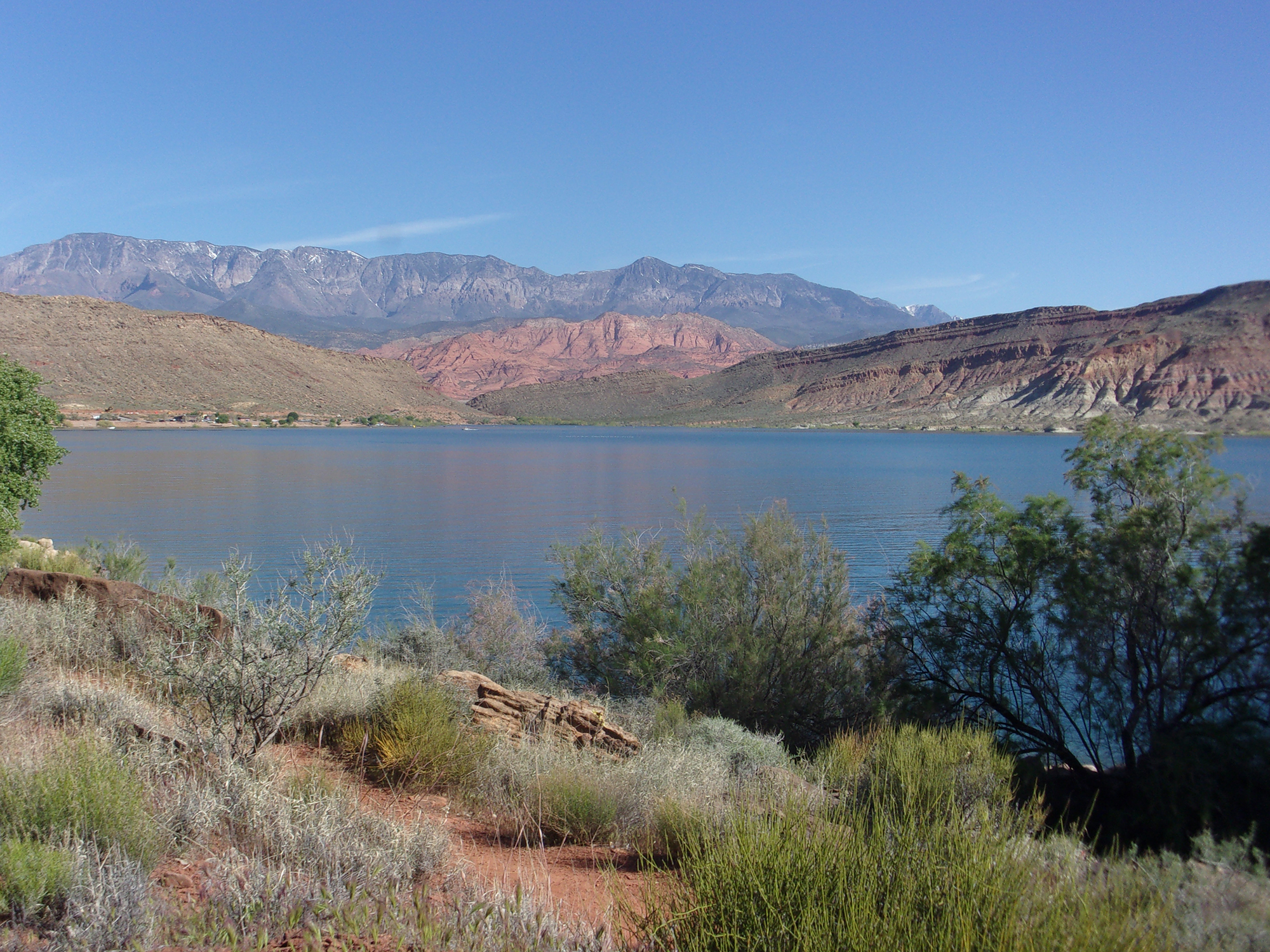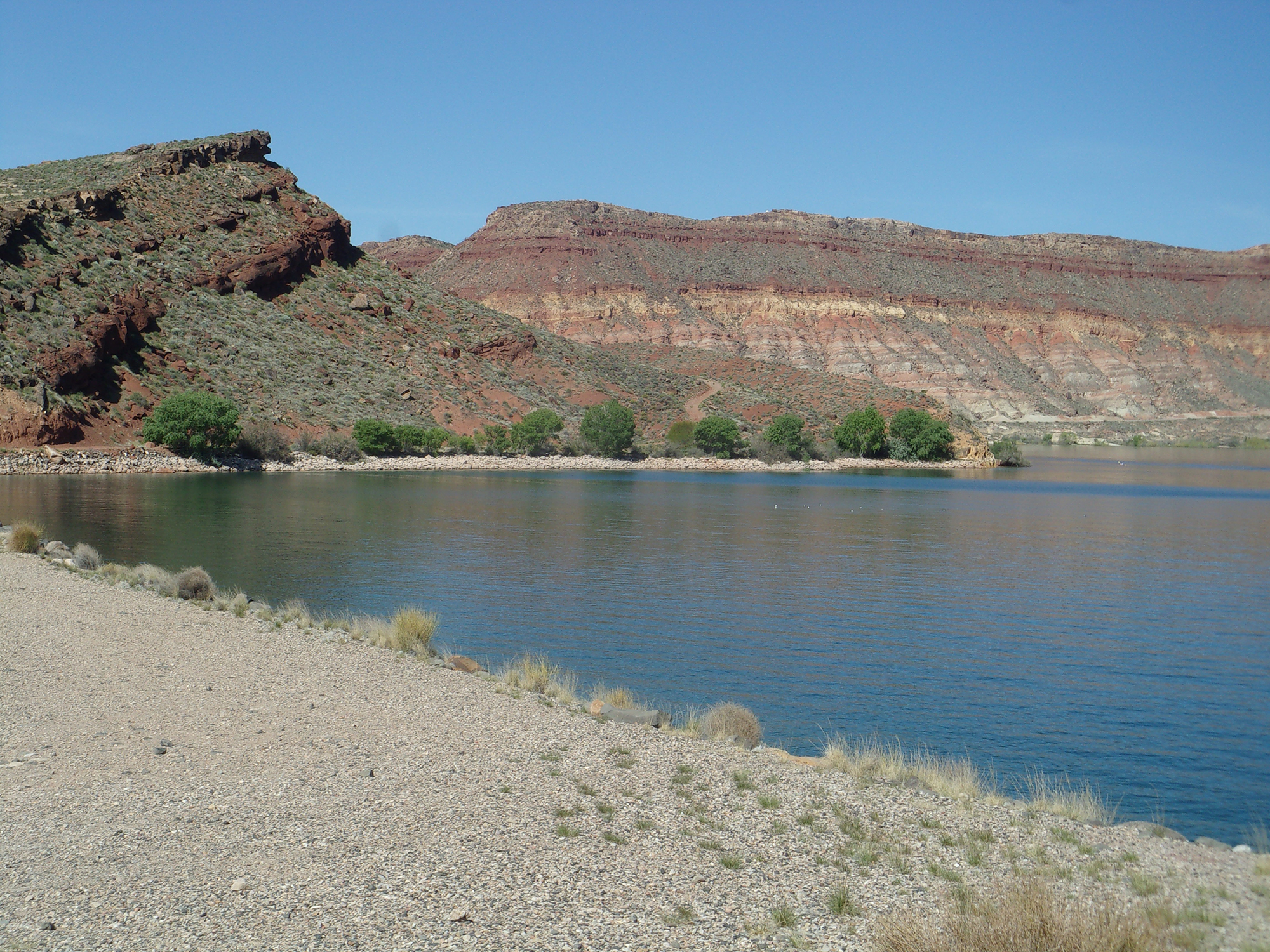
More is Required To Solve Southern Utah’s Water Challenges
– By Andrew Kramer –
The St. George metro area is one of the fastest-growing regions in the country. Explosive population growth combined with the impacts of climate change, extended mega-drought, and dwindling water supplies mandate that we fully optimize our water management practices, especially here in the dry desert country of Washington County.
The Washington County Water Conservancy District (WCWCD) is making laudable progress in managing water supplies while improving conservation efforts, and has plans to do more. Measures such as recycling wastewater for secondary (irrigation) use, the turf buy-back program, Advanced Metering Infrastructure which allows monitoring and early leak detection, adoption of Water Efficiency Standards for M&I use (municipal, residential and industrial) and many other initiatives are essential for improving water efficiency.
In 2023, the District hired Doug Bennett, an expert in water conservation. Bennett had previously initiated many of Las Vegas’s remarkable conservation achievements.
Despite these achievements and future plans, it’s apparent significantly more is needed to address our water issues with greater effectiveness. I suggest water managers move forward with the following:
Decouple Population Growth and Water Consumption: Although counterintuitive, decoupling occurs when total water consumption decreases despite an increase in population. It is essential for effective water management.
Several western cities, including San Diego, Los Angeles, Phoenix, and Las Vegas, have successfully decoupled by employing rigorous conservation measures and wastewater recycling.
For example, although the population of the Las Vegas region increased by 745,000 between 2002 and 2022, the total volume of water supplied decreased by 26%.
Although water managers at the District claim they’re making good progress toward decoupling, their data is suspect. In March 2023, in order to make water consumption appear more favorable (less), the Utah legislature passed SB119, which mandates a change in how water consumption has been calculated historically in most western districts, including Utah. Accordingly, the WCWCD now shows consumption amounts that are much lower than previously recorded.
For example, per the Utah Division of Water Resources (DWRe,) water consumption in WashCo in 2020 was 285 GPCD (gallons per capita per day). By contrast, a graph published recently by the WCWCD shows a consumption of 162 GPCD for 2020. This manipulation distorts decoupling and other conservation claims by the District and does not inspire public confidence. Reliable data is required to determine the facts.
Increase Water Rates: While the aforementioned conservation initiatives are essential, increasing water rates is the single most effective means to promote conservation. Instead, WashCo has some of the lowest water rates in the West. Consequently, there is little incentive to conserve.
A study by KSL.com last December compared water rates in several cities in Utah with rates in neighboring states. KSL calculated water charges for usage of 5,000, 10,000, 15,000, and 20,000 gallons per month and found St. George to have by far the lowest rates.
For example, water charges for using 20,000 gallons per month in St. George are $56.50, more than $107.00 in Denver and Phoenix, $152.77 in Las Vegas, and $178.88 in Boise. Recently, the WCWCD imposed hefty surcharges for high use ($176.50 for 20,000 gallons in St. George). Unfortunately, they apply only to new construction.
Water rates in Washington County must increase significantly to effectively decouple water consumption from population increases. Rates can be tiered so that water is affordable for low-income residents with low consumption, while high-consumption users are penalized for their excesses.
Reduce Property Taxes: Because the WCWCD is a public entity, water managers claim they’re prohibited from operating at a “profit,” which keeps water rates low. Yet, as noted above, other districts subject to the same stipulation have much higher rates, in part because their water rates are not subsidized by property taxes to the extent they are in WashCo.
A recent survey of 331 districts outside Utah by the Utah Rivers Council found that while most districts are entitled to assess taxes, only 49% collect property taxes. Taxes for these districts provide an average of 9% of revenues compared to 19% for the WCWCD. Further, water sales in other districts provide, on average, 53% of their revenues compared to 25% for the WCWCD. These factors contribute to the exceptionally low water rates in WashCo.
Clearly, reducing property tax subsidies and raising water rates significantly are feasible and mandatory actions required to effectively address our water challenges. What’s lacking is political will at both the local and state levels.
Avoid Unnecessary Infrastructure: Because water rates are low, demand is artificially high. With more water being consumed than necessary, more costly and unnecessary infrastructure is required to acquire, treat, and distribute water (such as the proposed cost-prohibitive Lake Powell Pipeline). When unnecessary infrastructure improvements are financed with bonds, property owners pay unneeded higher taxes.
To manage our water more efficiently, this cycle must end.
Conserve Agricultural Water. Agriculture abounds with wasteful practices, such as wheel-line sprinklers that spew massive amounts of water during the high evaporation summer heat of daytime. Because approximately 60% of water supplied in WashCo is used by agriculture, efforts to optimize its use must be expanded considerably.
Surprisingly, the WCWCD does not control water used by agriculture, which is regulated by the Utah DWRe. Although the DWRe formed a task force in 2018 to optimize agricultural water use, little has been accomplished. Because most agricultural water is not metered, waste prevails. Regrettably, the good progress being made by the District for M&I use is offset by the wasteful practices in agriculture.
To curtail our dwindling water supplies, the DWRe must require agriculture to do its part and take advantage of USDA federal subsidies to assist farmers in modernizing their infrastructure to make irrigating more efficient.
Recycle Wastewater. The water supply shortages we’re facing in WashCo have been evident in numerous communities nationwide beginning in the 1970s. In response, many communities implemented wastewater recycling for both secondary and potable use. Currently, many more communities are developing wastewater recycling capacity, supported by state and federal grants.
While many of us, including myself, dislike the rapid growth in the St. George area, like it or not, we must plan for increasing population and the impacts of climate change and extended drought.
Whether growth in WashCo continues as projected or slows somewhat, we must recycle wastewater, now for secondary use and eventually for potable use. This undeniable reality is documented in the book “Purified” by Peter Annin. Annin describes the decades-long history, proven technologies, and current status of wastewater recycling in the U.S.
Because bringing wastewater facilities online for potable use is a multi-year endeavor, the WCWCD should begin planning now. In addition to its current 20-year plan, the District has a 50-year planning horizon. Long-term planning is key.
Conclusion: Water managers should adopt the recommendations proposed herein to decouple water consumption from the increasing population and fully optimize their response to our water challenges. Our water future depends on it.





Andrew,
Thanks for this article – very informative and very much needed. I am a part-time Utah Tech professor (and retired aerospace engineer) and we recently received a small NASA grant to build a small satellite (CubeSat) that we will be using to help with water resource management for the state of Utah. We will be using an optical camera/lens system that should provide about 30 meter ground resolution from a polar sun-synchronous low earth orbit that will allow us to gather high resolution optical images. We are working with both the Utah water resources division in SCL and the Washington county water conservancy district on this project. Our plan is to launch CubeSats every year with different sensors that will help with Utah water resource management. As your article indicated many different approaches will be required, and this will help add another approach.
Monty Kennedy
Adjunct professor of mechanical engineering
Engineering department
Utah Tech University
monty.kennedy@utahtech.edu
c: 520-906-4449
Excellent article, Andrew. Well researched and well stated! Such an important issue for Washington County citizens to understand. Challenges are ahead as citizens who are being told to save water see the growth machine forging ahead on their backs. It will be challenging to deal with that.
It amazes me Washington County knows there is a huge water problem in this area, but it’s okay to approve water parks and more golf courses in the middle of a desert, not to mention all the new construction for business and residential not being capped! Unbelievable!